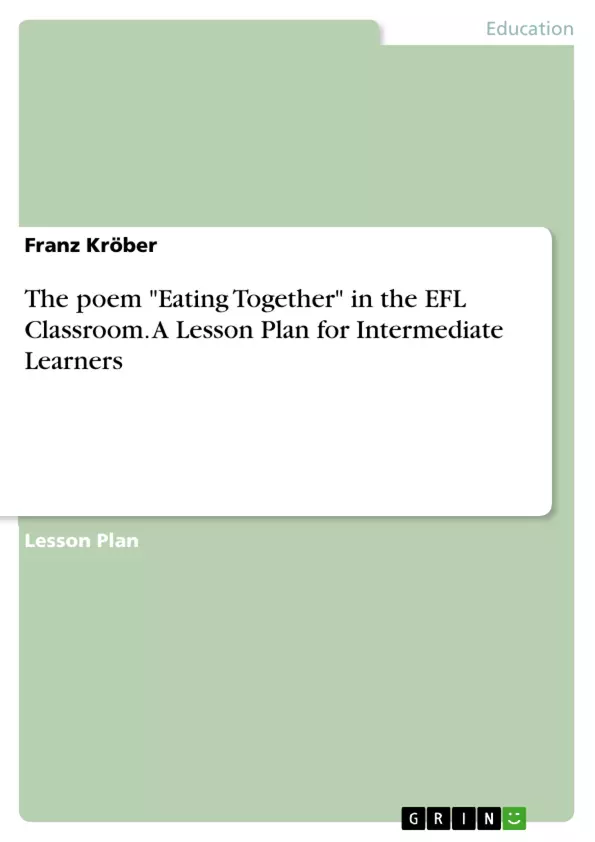This paper contains suggestions on how to teach communicative and interpretation competences by using the poem "Eating Together" by Li-Young Lee.
The poem deals with, amongst other aspects, the death of a beloved family member and mirrors the atmosphere of a family dinner after the tragedy. On the surface, the text cuts out any emotion towards the dependant’s death and concentrates solely on the basic actions of the family and on inanimate objects (cf. l. 1-9). Towards the ending, the text alludes to the family’s loss: “he lay down to sleep like a snow-covered road” (l. 9-10). This topic is of high relevance for students in tenth grade and touches upon their everyday life experiences. Additionally, vocabulary as well as grammatical structures in the poem is appropriate for the language level of B1. For these reasons, this essay aims at illustrating the importance of Eating Together for the EFL classroom by developing a model lesson including pre-, while-, and post-reading activities
Table of Contents
- Eating Together in the EFL Classroom
- Pre-Reading Activity
- While-Reading Phase
- Post-Reading Phase
- Conclusion
Objectives and Key Themes
This essay aims to illustrate the importance of the poem "Eating Together" by Li-Young Lee for the EFL classroom by developing a model lesson including pre-, while-, and post-reading activities. The poem is suitable for tenth graders and can be implemented within a unit on “Themenbereich A“: “Ich und die anderen” (Senatsverwaltung für Bildung, Jugend und Wissenschaft 2006: 47).
- The importance of "Eating Together" for EFL classrooms
- A model lesson including pre-, while-, and post-reading activities
- The relevance of "Eating Together" to tenth graders' everyday experiences
- The use of aesthetic reading to enhance student engagement with the text
- The development of speaking and communicative competence through the lesson activities
Chapter Summaries
The essay outlines a model lesson for teaching "Eating Together" in the EFL classroom. The lesson begins with a pre-reading activity using a picture of a happy family at dinner to activate students' prior knowledge and interest. The while-reading phase involves students continuing the poem and comparing their own verses with the original text, fostering engagement and a deeper understanding of the poem's language and style. The post-reading phase culminates in a pantomime activity where students interpret the poem through physical action and provide feedback on each other's interpretations. The lesson emphasizes collaborative learning, aesthetic reading, and the development of speaking and communicative skills, ultimately aiming to create a meaningful and engaging learning experience for students.
Keywords
The essay focuses on the poem "Eating Together" by Li-Young Lee, aesthetic reading, EFL classroom, tenth grade, pre-reading, while-reading, post-reading, pantomime, communicative competence, speaking, collaborative learning, and szenisches Lernen. These concepts are explored in the context of a model lesson designed for EFL students.
- Quote paper
- Franz Kröber (Author), 2014, The poem "Eating Together" in the EFL Classroom. A Lesson Plan for Intermediate Learners, Munich, GRIN Verlag, https://www.grin.com/document/281133



